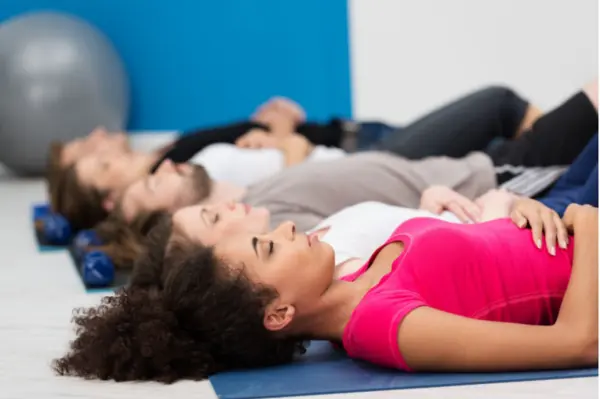In the fast-paced world we inhabit, stress has become an unwelcome companion. The need for relaxation techniques to restore balance and tranquility in our lives has never been greater. This thorough manual examines a variety of stress-reduction techniques that are adapted to the needs of contemporary life. From mindfulness meditation to the therapeutic benefits of essential oils, we’ll delve into each method, offering insights, guidance, and actionable steps to help you find serenity in a hectic world. And, as we navigate the landscape of relaxation, we’ll also explore the role of cannabis, including the intriguing concept of microdosing.
Mindfulness Meditation
Mindfulness meditation provides a mental haven in a world full of distractions. It’s a technique that helps you let go of concerns about the past worry about the future and live completely in the now. You can develop a sense of peace and mental clarity by concentrating your attention on your breath or a particular item.
Deep Breathing Exercises
A few moments of quiet and deep breathing might go a long way toward reducing stress. Deep breathing exercises set off the body’s relaxation response, reducing the production of stress hormones and promoting a calm and serene state of mind. These are useful exercises for anybody looking to de-stress because they can done almost anywhere.
Progressive Muscle Relaxation
Our bodies often bear the physical toll of stress, with tense muscles contributing to discomfort and unease. Progressive muscle relaxation is a method that involves systematically tensing and then relaxing different muscle groups. It helps release physical tension and can promote a profound sense of relaxation.
Yoga and Stretching
Yoga is a holistic practice that combines physical postures, breath control, and meditation to promote overall well-being. It’s well renowned for improving mental and physical balance, strength, and flexibility. Regardless of skill level, yoga and stretching may be a terrific way to begin or continue your path toward relaxation.
Aromatherapy and Essential Oils
Aromatherapy is the use of scent to influence mood and promote relaxation. Essential oils may be utilized in many different ways to support feelings of clarity, relaxation, or rebirth. They are derived from aromatic plants. To create a calming mood in your living area, you can disperse them, use them topically, or inhale them.
Guided Imagery and Visualization
The mind’s ability to create mental images and scenarios can be a powerful tool for relaxation. Guided imagery and visualization involve intentionally conjuring up peaceful, calming mental scenes. By immersing yourself in these mental journeys, you can reduce stress and anxiety and promote a sense of inner peace.
Music and Sound Therapy
Our emotions and mental states may be greatly influence by music. Utilizing particular sounds and frequencies, sound therapy may significantly improve relaxation. Whether you prefer soothing melodies or the resonance of Tibetan singing bowls, incorporating music and sound into your relaxation routine can be deeply therapeutic.
Cannabis for Relaxation
Although cannabis has long known for its recreational uses, its potential to help people relax and reduce stress has drawn a lot of attention in recent years. A portion of this change in perspective might attributed to our expanding knowledge of the many components of cannabis and how they affect the body. The two most well-known cannabis chemicals, THC and CBD, each have unique characteristics. THC is recognize for its euphoric effects, but CBD is neither psychoactive and is frequently linked to relaxing benefits.
One of the emerging trends in cannabis use for relaxation is microdosing. Microdosing involves consuming small amounts of cannabis to achieve its benefits without experiencing a strong psychoactive effect. This practice allows individuals to incorporate cannabis into their daily routine, potentially reducing anxiety and stress without significant impairment.
Understanding the relationship between cannabis and relaxation involves recognizing the different strains and their effects. Indica strains, for example, are often associate with relaxation and can help in reducing anxiety and promoting sleep. Sativa strains, on the other hand, might have a more uplifting effect. Additionally, the method of consumption—smoking, edibles, oils, etc.—can influence the experience.
The Importance of Consistency
It is important to regularly practice relaxation techniques as they are not a magic bullet. The key to their effectiveness lies in consistency. By committing to your chosen relaxation practices and setting achievable goals, you can gradually cultivate a sense of tranquility that becomes a natural part of your daily life.
Conclusion
In the whirlwind of modern life, relaxation techniques serve as vital anchors to calm the storm within. From mindfulness meditation to sound therapy, each method offers a unique path to tranquility. As we explore the evolving landscape of relaxation, including the role of cannabis and microdosing, we must remember that the power to find peace lies within our grasp. So, which relaxation technique resonates most with you? Which one will you embrace on your journey to a more relaxed and balanced life?
